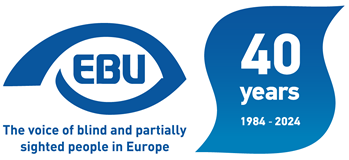by Aldo Grassini, Museum President.
The Omero Museum was established in 1993 in the city of Ancona. It was named after the famous Greek blind poet Homer.
The Omero Museum was created on the initiative of two blind persons. My wife Daniela and I - both blind and annoyed of being denied everywhere the right to enjoy the beauty of art - decided to create a tactile museum where to place real copies of the greatest masterpieces of sculpture as well as models of the most famous monuments. For this difficult journey, we started with the support of the Italian Union of the Blind, the Municipality of Ancona and the Region Marche, where we live. In 1999 the Italian Parliament, appreciating the role and uniqueness of this project, approved a law that recognized the Omero Museum as the "State Tactile Museum".
The Omero Museum includes a section dedicated to Greek, Roman and Italian sculpture with particular attention to the Renaissance (there are 10 works by Michelangelo), up to the nineteenth century.
These are scientifically created copies of the same size as the originals. Moreover, there is a gallery dedicated to contemporary art with about a hundred sculptures, all original, which include among the authors some of the most important masters of Italian art of the twentieth century.
The architectural models, made according to the most suitable scale to represent the structure and decorations of each monument, are another reason of interest.
A new section has recently been opened. It is dedicated to the Italian design with the best of industrial art that has made Italy famous in the world.
Since 2012, the Omero Museum has been located in the splendid “Mole Vanvitelliana”, a 3000-square-meters edifice emerging from the sea, built by Luigi Vanvitelli, a great Italian architect of the eighteenth century.
It must be emphasized that at the Omero Museum everything can be touched. Here there are no barriers for blind people, but we do not think only of them. All activities are designed to be accessible to any visitor. Inclusion is the primary objective: people with different needs can live a common experience together, each according to their possibilities: blind people touch, sighted people watch, children learn through play.
But the possibility of touching is granted to everyone, even to those who see. And so, a new way of approaching art is experienced. The traditional prejudice that art is linked only to the function of seeing falls away, and the concreteness of the relationship with nature, which is based on all the senses and not only on sight, is rediscovered.
Blind people have taught those who see something: touching, indeed, caressing beautiful things is exciting and introduces qualities otherwise unattainable by the other senses. And for those who see, adding the emotion of touching to the emotion of seeing also means discovering a new dimension of art.
The next step is a multi-sensorial level, that is the commitment of all the senses in the aesthetic experience that today represents the goal of ever more numerous artists.
As regards the problems of accessibility of cultural sites so that they are accessible without barriers for all types of public and particularly for the visually impaired, the Omero Museum is now a point of reference for Italy and arouses interest also in foreign countries. This different way of thinking about art requires a different way of presenting it through a transformation of museology and educational methods. Museums are not just for looking. "Forbidden to touch" makes no sense when it is not essential for the protection of works of art.
Before the pandemic, the number of visitors had reached 35,000 in 2018 and 2019, but it is interesting to underline that the vast majority were not blind but able-bodied people. A fine example of inclusion, but also a reality that revolutionizes the ancient concept of art as the exclusive realm of seeing. And this new frontier of aesthetics and museology is taking an interest in many academies and many university faculties. We are continually invited to scientific meetings with these cultural institutions and even to hold some academic courses. Obviously, there is all the consultancy work to which we are called by many museums and places of culture that want to respond to the demand for accessibility of which society is now becoming increasingly aware.
I usually say that when the Omero Museum was established in 1993 it was like "a voice crying out in the desert". Today society is changing profoundly. Of course, we don’t pretend to be architects of this transformation, but we see ourselves as an active part in a more and more democratic culture, respectful of everyone's rights.

